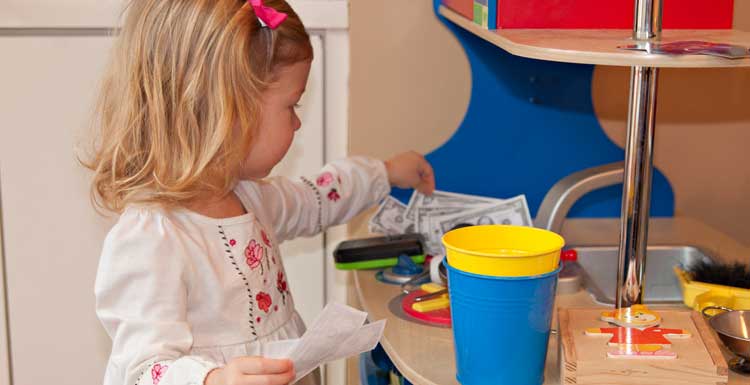This month is play therapy awareness month! In this post, I’ll talk about what play therapy is, how it differs from other types of therapy for children, and take a quick look at some of the research on its efficacy. But first…
Imagine you are about to see a therapist for the first time. You’re feeling hopeful, but a little nervous. You’ve never been to therapy before and you don’t know what to expect. You arrive at your appointment on time and are welcomed into the therapist’s office. Your new therapist looks at you kindly, and then starts speaking in an entirely different language. At first, you’re not sure what to do, so you try to speak in your native language. The therapist looks a little confused, but smiles back and continues speaking. You have no idea what she is saying. Your hope of understanding and being understood is fading away.
While this example may seem a bit dramatic, I hope it illustrates what a child might experience in therapy that wasn’t suited to their developmental stage. Expecting children to communicate in the same way adults communicate is like asking them to speak a foreign language. It simply isn’t realistic. Children require a form of therapy that enables them to communicate in ways that are developmentally appropriate. That’s where Play Therapy comes in. Play is a child’s natural way of exploring the world, and through play, children are often able to express what they might not be able to convey in words.
What is Play Therapy?
Play therapy is a structured, evidence-based therapy for children. In Play Therapy, play is seen as a child’s natural way of communicating.
“Play Therapy is based upon the fact that play is the child’s natural medium of self expression … It is an opportunity which is given to the child to ‘play out’ his feelings and problems just as in certain types of adult therapy an individual ‘talks out’ his difficulties.” Virginia Axline
In Play Therapy sessions children are given access to a large variety of toys and supported in expressing their difficulties through play. Play therapists tailor each session to the individual child’s needs.
Play Therapy vs. Other Therapies for Children
It is important to understand the difference between Play Therapy and other forms of therapy for children. For example, some therapists provide toys as a way of helping children feel comfortable and encouraging them to talk, but this isn’t necessarily play therapy. While play therapists are supportive of children talking, having a direct conversation about the child’s difficulties isn’t the end goal in a play therapy session. Play therapists recognize that a child does not need to explicitly verbalize her or his feelings to benefit profoundly from a therapy session.
Is Play Therapy Effective?
The short answer is, Yes! Four separate meta-analyses showed that play therapy for children had moderately large to large effect sizes (Golding, 2016). Those are BIG effect sizes! The research is showing us that play therapy is as effective as most forms of psychotherapy for adults. It is also showing us that Play Therapy is just as effective as Cognitive Behavioral Therapy (CBT) for children, and may have some distinct advantages over CBT, like being more cognitively/linguistically appropriate.
To learn more about play therapy and some great resources for parents, check out the Parent’s Corner at the Association for Play Therapy website: https://www.a4pt.org/page/ParentsCornerHomePag
Written by Susan Hardman, Ed.S., NCSP, is a nationally certified school psychologist and current James Madison University doctoral student intern in clinical and school psychology. She enjoys working with children, adolescents, adults.
Reference: M Golding, J. (2016). Evidence-based child and adolescent psychotherapy: It’s not what you think: Evidence-based psychotherapy. Journal of Paediatrics and Child Health, 52(10), 919–922. https://doi.org/10.1111/jpc.13272
